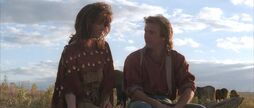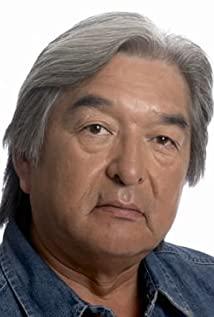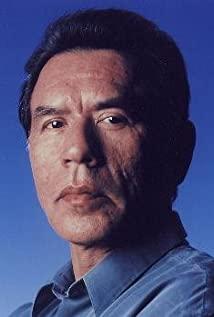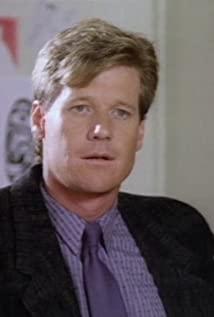"Dances with Wolves" tells the story of what happened with the Sioux Indians when he was alone in a fort on the border with minority (Indian) territory from the perspective of a white soldier. This article attempts to sort out the plots of cultural fusion and conflict in the film and then discuss the points associated with cultural anthropology from the film. Trying to retell the film about the encounter between different racial cultures and get rid of the legitimacy of racial and cultural centralism.
First, the cultural collision in the film
What Lieutenant John Dunbar encountered was a tribe of the Lakota, one of the three main groups of the Sioux, the Indians. The Sioux are the indigenous people of North America, and there are still Sioux tribes that maintain an independent tribal government, scattered in the north and south of the Dakotas. [1]
(1) Cultural integration
1. first meeting
Dunbar is naked after swimming when the Tribal wizard Kicking Bird appears at the fort. This was the first time a white man had come so close to an Indian. Dunbar showed curiosity and scared the bird kick away. But a white man living alone on the frontier also aroused the curiosity of the Sioux. But this kind of curiosity is more manifested as distrust and instinctive rejection of foreign cultures. The warriors in the tribe called "Spirit in the Wind" began to express that the white man was a lunatic, and he was not afraid of the white man.
2. Dunbar took the initiative to visit
On the way to the Sioux tribal camp, Dunbar bumped into a white woman who tried to commit suicide because of the death of her husband. The white woman was actually captured by the tribe when she was very young. In the acquired environment, she used the Sioux language, Live in Indian customs. Even later, when he and Dunbar fell in love with each other and wanted to marry, the time for his ex-husband's mourning was also decided by the tribal wizard Bird Kick.
Then in the first contact, Dunbar was not welcome, everyone was instinctively hostile, and "Sent in the Wind" kept yelling at Dunbar, who came on horseback, "You are not welcome here.".
3. The visit of the Sioux tribe
Chief Ten Bears sent bird kicks and wind to visit Dunbar, and after several visits, the Sioux Indians came to understand that their white neighbors were not crazy. The coffee machine and white sugar from the Western civilized world were exchanged for buffalo leather. Dunbar gradually felt that the Indians were not thieves and criminals from the perspective of white centralism, and they also began to trust each other and feel happy in getting along.
4. Break through the language barrier to communicate
In the process of further cultural exchange and integration, through the translation of the white woman who grew up in the tribe, Bird Kicking and Dunbar got to know each other's names, Dunbar also learned the Sioux language, and everyone was able to communicate. From a subjective point of view, Dunbar respected each other's habits in lifestyle, such as ceremonial smoking; went to the tribe at night to inform them of the passing of the buffalo herd; helped them find a herd of buffalo that they depended on as a source of food; Dunbar gradually became a The hero of the Sioux, who later became an honorary member of the tribe, received many gift materials and clothing.
5. Establishment of Identity
Lieutenant Dunbar was alone on the western frontier and was friendly with the Indians. Under this circumstance, Dunbar largely agreed with the culture of the Sioux. Compared with the Protestants who worked hard and kept their jobs, they could predict the Protestant ethic of being chosen by God to have peace of mind. The life of mutual love, on the contrary, shows harmony and happiness that he has never seen before on the plains of the west.
As he gradually felt the need for company and identification with Sioux culture over unresonant military duty, Dunbar danced alone at the fort at night.
In the later wedding, Dunbar married a white woman. The process was according to the wedding ceremony of the Sioux. When Dunbar listened to the norms of the Sioux husband in the wind, he gave birth to the recognition from his heart. It can be understood that Dunbar is to a large extent. It has been assimilated, so to speak, almost completely going native.
6. The establishment of recognition
After hunting buffalo with the Sioux, Dunbar ate a freshly cut ox tongue in the wind, and the crowd cheered.
Tribal members named the Dunbar Sioux "Dancing With Wolves" after they witnessed him playing with the Two Socks.
Dunbar provided the Sioux soldiers with the remaining rifles and ammunition in the fort to help the Sioux defeat the Bones attack. After this battle, he was finally accepted as a full member of the tribe.
The Pawnee who fought the Sioux were another Indian. Writer and historian Mark Van der Loot described the film's Sioux-Pawnee relationship in War Party in Blue: Pawnee Scouts in the US Army: "While military historians tend to preserve the modern industrial state The concept of "total war" for the conflict between the Personnel are legitimate targets..." [2] It is therefore understandable that Dunbar, who had armed the Sioux and helped them achieve unprecedented victories, was further embraced by the Sioux.
When Dunbar finally had to decide whether to leave or stay, Chief Ten Bears wanted Dunbar to stay, because they saw him as a Sioux Dancing with Wolves, not a white lieutenant Dunbar.
When Dunbar finally left, the wind was blowing from the top of the mountain, not listening to the name "Dancing With Wolves" and asking if they were friends. This is in stark contrast to "you're not welcome" at the beginning. Hostility is neither natural nor necessary.
(2) Cultural conflict
1. Deal with the enemy
Timmons, the farmer who brought Lieutenant Dunbar to the fort, was ambushed and killed by the Pawnee Indians on his return to white territory. The last thing Timmons cared about before his death was the production donkey, while the Pawnee howled with excitement at being the slaughter of whites.
On the eve of Sioux friends celebrating buffalo hunting, killing white hunters and cutting off whites' hair, Dunbar discovered that there was still some kind of estrangement between him and the Sioux that was unlikely to close.
2. Gift exchange
"It's a good deal," Dunbar said as he swapped clothes with the wind. The wind is blowing just to look at it for some reason.
In the subsequent hat competition, it reflected the difference in cultural perspectives. For the nomadic Indians, what they picked up was possession, but from the perspective of the modern culture of the Dunpais side, returning their hats seemed to be different from the protected hats. Private property rights are the same thing.
At the beginning of the movie, Dunbar just gave the rest of the coffee and sugar to the Indians, while Bird Kick gave back a buffalo hide. There are also significant differences and differences in everyone's concept of value measurement.
3. Treat nature
The aggressive white army of modern expansion shoots wild creatures mercilessly, and just for fun, shoots Dunbar's wolves.
When it comes to grabbing natural resources, the Indians are receptive and free, while extreme white hunters shoot large swathes of buffalo, taking only the buffalo's fur and tongue. The tragic state of corpses not only affected the Indians, but Dunbar also felt the injustice and sin of the white people's actions.
2. Discussion
(1) The failure of the "cultural progress theory"
From the perspective of white culture, social Darwinism prevails. In short, for the anti-white soldiers and hunters in the film, the Indian society is old and even outdated, but it is an inefficient hunter-gatherer society. And for white North Americans then, and more now, "progress" was seen as a belief: the old inevitably gave way to the new. In the movie, as the army advances on the plains, the frontier no longer becomes the frontier. At this time, ethnocentrism gets its most dramatic expression. The indigenous Dunbar, facing the American soldiers who expand the frontier, is "aphasia". Although they both use English, they are divorced from the system of discourse they once shared. In a sense, Lieutenant Dunbar can no longer agree with the wanton slaughter of living beings, nor can he accept an attempt to expand territory by force with guns and modern technology. Therefore, for the latecomers , a white man who "betrayed" white culture is more worthy of hatred than an Indian. Dunbar was shot mercilessly as soon as Dunbar appeared on horseback - at this point Dunbar was considered a traitor.
When a traditional culture that is highly adapted to a specific environment encounters a modern culture that originated in Europe, it will often become acculturation and even decline. Those with a social-progressive perspective would argue that this is so because this traditional culture and its political and social organization are simply no longer suitable for "modern" life. That's when ethnocentrism comes back, and it often becomes a self-fulfilling prophecy, because the culture that's at a disadvantage doesn't get the chance to adjust to the new environment.
" It is not any natural law that causes the decline of traditional culture, but the political choice of power. They want to invade the land already occupied by the aborigines, want to rule the latter, and do not want to live or let others live ." [3]
The example of the Shure people in Ecuador proves that it is possible to retain a unique cultural and ethnic identity while adapting to the modern world [4] , but what has happened in history is that more powerful peoples define the whole society of other peoples as antiquated, Backward or dirty, inferior.
(2) The temperament of an anthropologist
The decisions Dunbar ultimately had to make would affect not only him, but the lives of the Aboriginal people he now calls his countrymen. When talking to Bird Kick about the number of whites that will come, Dunbar tells the wind that there will be as many whites as stars. And the chief "Ten Bears" just said that this is their only home and a home that must be guarded.
Anthropologists, according to the tradition of the discipline, are required to temporarily integrate with the local people, to eliminate the moral and political contradictions with them, and to be "intimate" with them. The conceptual frameworks of "participatory observation", "thematic viewpoint", "local knowledge", etc., are just to achieve the effect of "de-defamiliarization" among the "indigenous". [5] It is also for this reason that Dunbar's role is more like an anthropologist than a "traitor", which does not refer to an academic level but an attitude towards cultural differences and conflicts. Although Dunbar has been shown to be native (going native), his final decision still reflects the detachment of his concept, he decided to return to the white world, and to "seek the truth" to talk about it.
The natural "contrast" provided by "primitive society" to "civilized society" gives anthropologists the opportunity to obtain these spiritual wealth and give it to the society in which they live. Dunbar's return to the white world to find a way closer to the best of both worlds shows a similar "feedback". It’s just that there were no conditions to achieve the best of both worlds at the time. Eighteen years later, the horseback civilization of the American Plains finally accepted the jurisdiction of the white regime. To some extent, the struggle over racial inequality continues to this day.
If the film "Dancing With Wolves" can enlighten us in any way, apart from the attitude towards nature or ecology, or the loss of the sunset beauty of the plain, it can also be about the coexistence and change of races and cultures. Reflection on sexuality, this reflection may be almost the same in Western countries, but in your country, it may still be necessary to discuss - get rid of the shackles of racial and cultural centralism, and use a tolerant mentality to view and accept other ethnic groups. Ethnic culture, to accept the reality that this world is not only one kind of modernization path.
3. References
[1] Wikipedia. Sioux[EB/OL]. https://en.wikipedia.org/wiki/Sioux#Relationship_with_Pawnees.
[2] Mark van de Logt. War Party in Blue: Pawnee Scouts in the US Army. [M]. Oklahoma: University of Oklahoma Press, 2012. 35-36
[3] William A. Havilland. Cultural Anthropology [M]. Qu Tiepeng, translated. Shanghai: Shanghai Social Sciences Press, 2006
[4] Ibid
[5] Wang Mingming. An Anthropologist as a "Stranger" [J]. Northwest Ethnic Studies, 2006, (3): 16-20
View more about Dances with Wolves reviews











